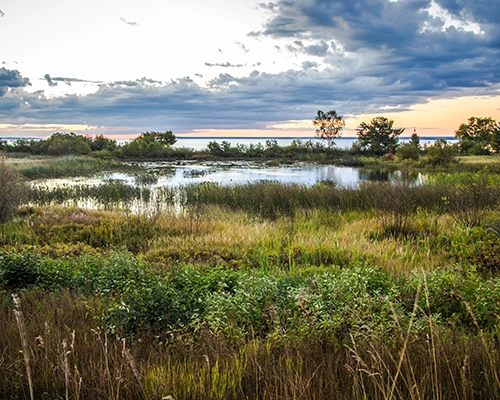Pace® Surface Water Testing
Surface water is defined as any body of water above ground, including oceans, streams, rivers, lakes, wetlands, reservoirs, and creeks. Used by agriculture and industry, for recreation, and as a drinking water source, surface water quality is essential to human health and safety.
Some of the biggest risks to human health from surface water pollution are the waterborne diseases caused by pathogens in human waste. Other risks include industrial discharges of surface water pollutants, such as organic chemicals and heavy metals. Surface water contamination can also lead to bioaccumulation of hazardous pollutants in fish and other organisms. Pace® provides multiple types of testing services for these and other surface water contaminants.
How Is Surface Water Regulated?
The United States Environmental Protection Agency (EPA) is a primary source of surface water regulations as are state and local environmental agencies and health departments.

The Federal Clean Water Act (CWA) establishes standards for surface water and makes it unlawful to discharge pollutants into the Waters of the United States unless approved through a special permitting process. Surface water, the receiving water for discharged wastewater, is monitored to ensure it does not contain contaminants higher than CWA standards. Federal law requires the review of water quality standards every three years. State laws may require more frequent reviews. The CWA also regulates how dredged or fill material may be deposited into lakes, wetlands, streams, rivers, and estuaries.
The Comprehensive Environmental Response, Compensation, and Liability Act (CERCLA), sometimes referred to as Superfund, is designed to remedy threats from unexpected releases and historical mistakes in hazardous waste management. CERCLA regulates the cleanup of abandoned hazardous-waste sites as well as accidents, spills, and other emergency releases into the environment, including surface water.
The Resource Conservation and Recovery Act (RCRA) is a proactive program regulating municipal and hazardous disposal. RCRA’s corrective action program is designed to investigate and guide the cleanup of any contaminated media, including surface water, that results from spills or releases into the environment from any RCRA-regulated facility.
Issued by the EPA, the Surface Water Treatment Rules (SWTRs) are designed to reduce human illnesses caused by pathogens in drinking water, such as Legionella, Giardia lamblia, and Cryptosporidium. These rules apply to all public water systems using surface water (or groundwater under the direct influence of surface water) as a source of drinking water. SWTRs require public water systems to filter and disinfect surface water sources.
Pace® Surface Water Testing Services
Whether contamination takes place over decades or is the result of an accidental release, protecting public health and mitigating risks requires reliable, fast testing services with defensible results. Pace® has provided compliance testing and other surface water analysis services for more than three decades. Some of the surface water contaminants we most frequently test for include:
Additional Resources
Need to find a lab that can handle your unique requirements?
Contact us directly or download our list of environmental certifications across our network.